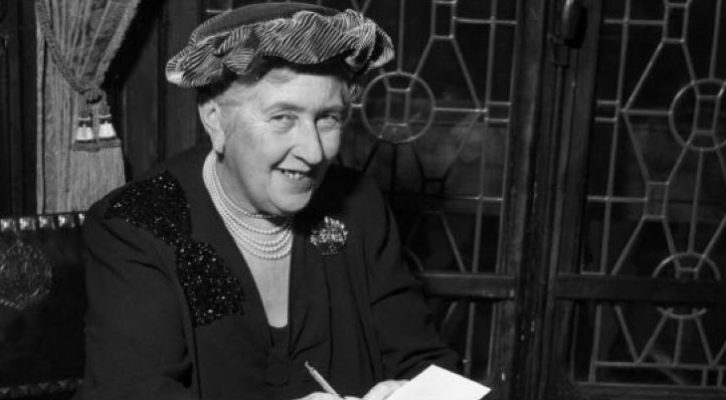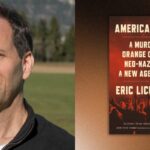
Why Literature Needs Psychology
Two Disciplines Wrestling With the Same Big Questions
The risk of passionate love is this: it makes everything outside its immediate, glowing orbit look dull and distant by comparison. What we love dims the rest of the universe, whether we love a person, a drug, or an idea.
Or even, I would venture, an art form. For the reader feels a lover’s protective affection for her books—not books in general, but the few genres she has settled into like old furniture: midlist literary fiction, say, or historical memoirs. She reads what she knows she likes, until one day she wakes up to find that what she likes no longer measures up to what she needs.
When I was 18, I did the same two things as a million other 18-year-olds: I went to college, and I got depressed. To my naive surprise, depression changed what I needed from my reading. It made the great realist novel, until then my deepest pleasure, feel far away, like the events it described were happening to characters living in a world a few feet to the left of mine. No longer for me setups, marriages, intrigues, misunderstandings. I wanted writers who didn’t take for granted the fact of getting out of bed in the morning, or putting on clothes, or leaving the house.
I embarked on what amounted to a research project that took as its object of study my own emotional state. I started with Andrew Solomon’s The Noonday Demon, William Styron’s Darkness Visible, and Kay Redfield Jamison’s An Unquiet Mind, all hybrid memoir-studies in the shapes and shadows of mental illness. Once I had a sense of the big themes in writing about mood disorders, I moved on to nonfiction less grounded in personal narrative, like Peter Kramer’s Against Depression, which asks us to see depression as a biological disease process rather than a metaphysical affliction. My expanded curiosity also led me to classics of popular psychology beyond the topic of depression, like Oliver Sacks’s The Man Who Mistook His Wife for a Hat, a collection of case studies in psychopathology, and A General Theory of Love (Lewis, Amini, and Lannon), which sketches neural structures in order to show how our constant forming and severing of romantic attachments—otherwise known as “dating”—causes literal brain damage. Ten years later, I still consider these books foundational.
Though my reading frenzy began as a search for comfort, the kind of comfort we experience when we say we “relate” to a book, it changed once I realized I had stumbled sideways into an entire genre of literature that deserved its own reckoning. For these authors were writing literature of a kind; you could hear it in the music of their prose and their command of figurative language. They were telling stories of loneliness and connection not unlike those I’d read in the bread-and-butter standards of my English education. And their concerns were literary, which is to say they were interested in the same vital questions about the human condition that philosophers and novelists have asked for millennia.
I discovered, in other words, that these two bodies of work—literature as I’d always known it and the psychological writing I was coming to know—were secretly twinned. The difference between the genres lay not in what stories they told, but in how they told them, each according to the intellectual tradition from which its authors had come. Despite their divergent frameworks, both traditions were organized around that fact of human experience that summoned art and philosophy into being: pain, the disharmony in the tune of all human endeavor. An essential mission of literary and psychological writing is to construct a taxonomy of pain in order to extract meaning from it—because if pain means nothing, then it cannot be borne. Whereas literature gestures at this mission obliquely, psychology features it front and center.
Which is one reason it had previously escaped my notice. Depression forced me into a critical intimacy with my pain, made up of traumas and anxieties that had heretofore lain dormant. But now I peered into the well of my discomfort, craning to see its dark recesses. As I dove deeper, my reading advanced from the popular to the academic: theories of childhood development, subverbal communication, integration and attachment. Each forced me, to greater and lesser degrees, to remake my world in its image.
Depression forced me into a critical intimacy with my pain, made up of traumas and anxieties that had heretofore lain dormant.
I felt exhilarated, newly awakened, yet also prickled by that annoyance you feel when you discover on your own what smarter people should have made you read long ago. Even years into my self-made course of study, I’d heard nary a mention of the psychological sciences from the overwhelming majority of my humanities professors and bookish friends, who were quick to incorporate other social scientific texts—historicist, feminist, ecocritical—into their analysis of life and literature. When I thought of introducing a psychological context to these discussions, I balked, restrained by a sure premonition of pushback, or worse, blank stares.
I do not think this dread was unfounded. Present-day subjects tend to scowl at the mention of the word “psychology.” They find themselves transported to 1890 Vienna, cradle of Freudian psychoanalysis, Oedipal complexes, penis envy, etc. No matter that the psychoanalytic tradition was quick to outgrow Freudian orthodoxy, beginning with Jung and Lacan and continuing into its present incarnation, which ranges from Buddhist mindfulness to gestalt to feminist analysis. And even the ideas of Freud himself were never confined to the pinhole of the individual and his neuroses; he was always already writing social theory on a grand scale.
Yet this bias makes small beans compared to what I suspect is the real root of psychology’s intellectual exile: the damnable, never-ending war between the “two cultures,” the term coined in 1959 by C. P. Snow to describe the chasm in Western intellectual life between the humanities and the sciences. The literary arts are grouped among the former, psychology generally with the latter, in the company of the so-called social sciences (much to the chagrin, I’m sure, of the natural sciences).
Though some have heard in the current vogue of multi- and interdisciplinary studies the death knell of the culture war, we are everywhere surrounded by evidence of its vigor. Take, for instance, Marco Roth’s 2009 article in n+1, “The Rise of the Neuronovel.” Roth coins the term “neuronovel” to decry a burgeoning genre: narratives that feature protagonists with psychiatric disorders (Tourette’s syndrome, schizophrenia, etc.). These stories, he claims, cede ground from the social/environmental theory of mind to the neurobiologic study of the brain. Too much pathology, says Roth, which is too particular, too strange to generalize in the way that literature ought to allow for.
As though pathology were not universal. As though there were any difference between mind and brain. And as though the scope of human knowledge were a finite resource, to be doled out between disciplines like wartime rations.
Rather than berate the neuronovelist for letting icky science into her writing, we ought to commend her for broadening the purview of literature to include insights gleaned from other territories. If we want literature to inhabit the full measure of human experience, it must stretch to accommodate new ways of knowing the world. And if we want to catch glimpses of the truths that govern human culture and behavior, we must open ourselves to the wisdom, no matter how surprising or counterintuitive, of strangers working in strange lands.
If we want literature to inhabit the full measure of human experience, it must stretch to accommodate new ways of knowing the world.
One of the most successful cross-pollinators of literature and psychology has been Dr. Irvin Yalom, a Hopkins-trained psychiatrist, clinical and academic psychologist, and writer. Dr. Yalom has written scholarly texts, short stories, and novels. His model of existential psychotherapy represents an approach to science colored by a deep knowledge of literature; his literary writing is similarly informed by his years of study and practice in psychology. He is interested, above all, in how to cope with the meaninglessness and isolation of existence, and so his writing is beloved by readers across disciplines and preferences.
The book of Yalom’s I love best is his first, a quasi-memoir called Every Day Gets a Little Closer, which he co-wrote with a long-term patient, Ginny. Ginny and Yalom each wrote logs of their therapy sessions together, which are therein collected in chronological order. The accounts differ in style and content, yet the reader can clearly trace the development of the therapeutic relationship, its slow burn, its moments of spark and combustion. It is the kind of book that enlarges your idea of what storytelling can do.
It is also a reminder that the field of psychology is both a body of writing and a practice, which two cannot be disentangled one from the other. The theory exists in service of the praxis, which is ultimately a pursuit of wellness through counseling, medication, and a variety of other treatments. Psychology, that is to say, is about doing. Even its pure research arm, which, like all scientific research, seeks knowledge partly for its own sake, harbors an outsize focus on the pragmatic applications of its findings. Literature, as an art, can and should not embrace such a functional aim. This is a core distinction between the two. Psychology is oriented in the direction of health; the artist’s fuel is sickness, strife. The artist dwells in his suffering in order to make something from it; the clinical psychologist explores her patient’s pain only to the extent necessary to move past it.
Which is not to belittle the therapeutic value of reading. Beyond the immediate pleasure of the text, good books kindle empathy, expand our sense of what is possible, offer escape both out of and into the world. But does reading make us happy? Can it heal the wounds of early life that dog us into adulthood? Granted, happiness isn’t everything, but grasping in the direction of something-like-happiness—satisfaction, meaning, relationality—comes pretty close. Much if not most of the emotional work we do in this life is, in the words of Edward St. Aubyn, “to get ready to be ready to be well”—to reach a degree of health at which happiness, however hard-won and fleeting, is even a possibility.
For reading is a solitary endeavor, and wellness exists between people, like a gift, or a secret. This is not to say that we should seek the key to our own fulfillment in others—only that we won’t find it solely within ourselves.
This is the founding premise of talk therapy, a cornerstone of psychological praxis. Skeptics ridicule the notion of talking oneself out of depression—and they are right to. That goes double for other, severer disorders of mind. But what naysayers miss is that therapy, in its modern form, is not about cure, but connection. It’s about cultivating a relationship within preset boundaries, and then trying out healthier styles of connection within the safety of that relationship. It’s an experiential approach to answering the question of how to live. Talk therapy is the Big Questions of literature made flesh.
I began therapy soon after my college downswing, and have been in and out since. One reason I keep coming back is that I am a reader, and therapy, too, generates a text, projected into the third dimension, suspended between therapist and patient, which then dissipates, its residue hanging in the air like an old scent. Each session makes a chapter in a book, infinitely recursive, referring to its earlier, half-remembered antecedents. This book, ever unfinished, may have much to teach the student of literature. It sits on a shelf spine-to-spine with that other book which consists of everything we’ve ever read that’s knocked us into a new ways of seeing, new ways of being—and thereby taught us who we really are. Our task, as T. S. Eliot wrote, is not to cease from exploration, so that we may arrive where we started and know the place for the first time.
Jennifer R. Bernstein
Jennifer R. Bernstein is a Seattle-based writer and co-founder of The New Inquiry. She tweets @jenniferrenu.



















